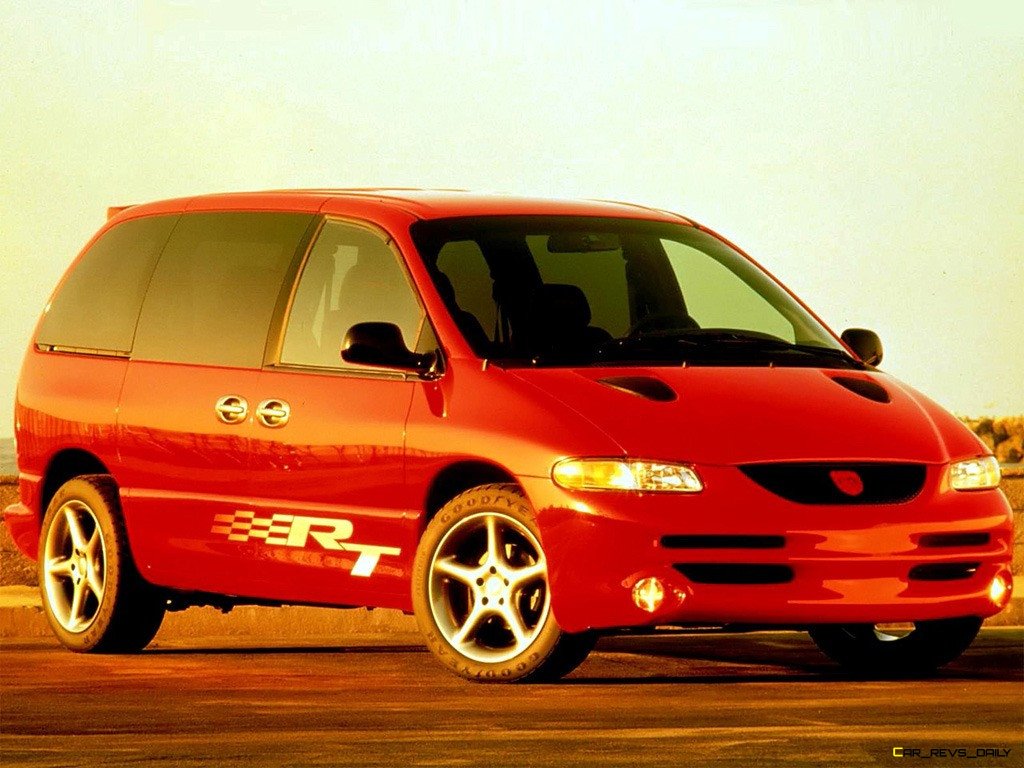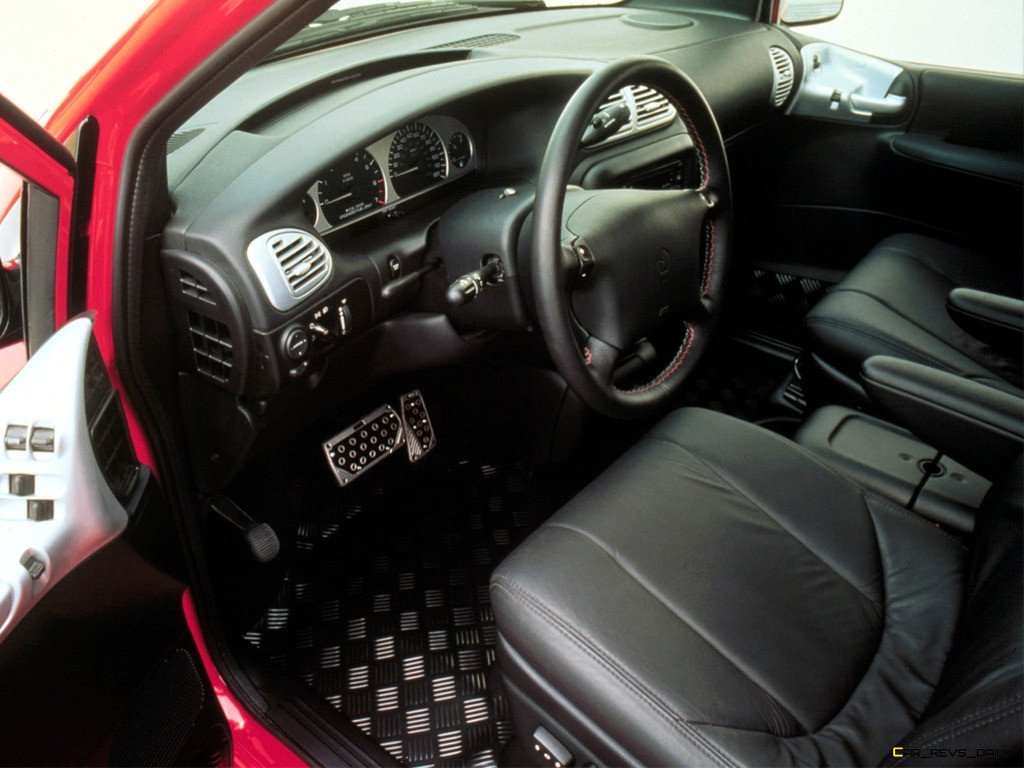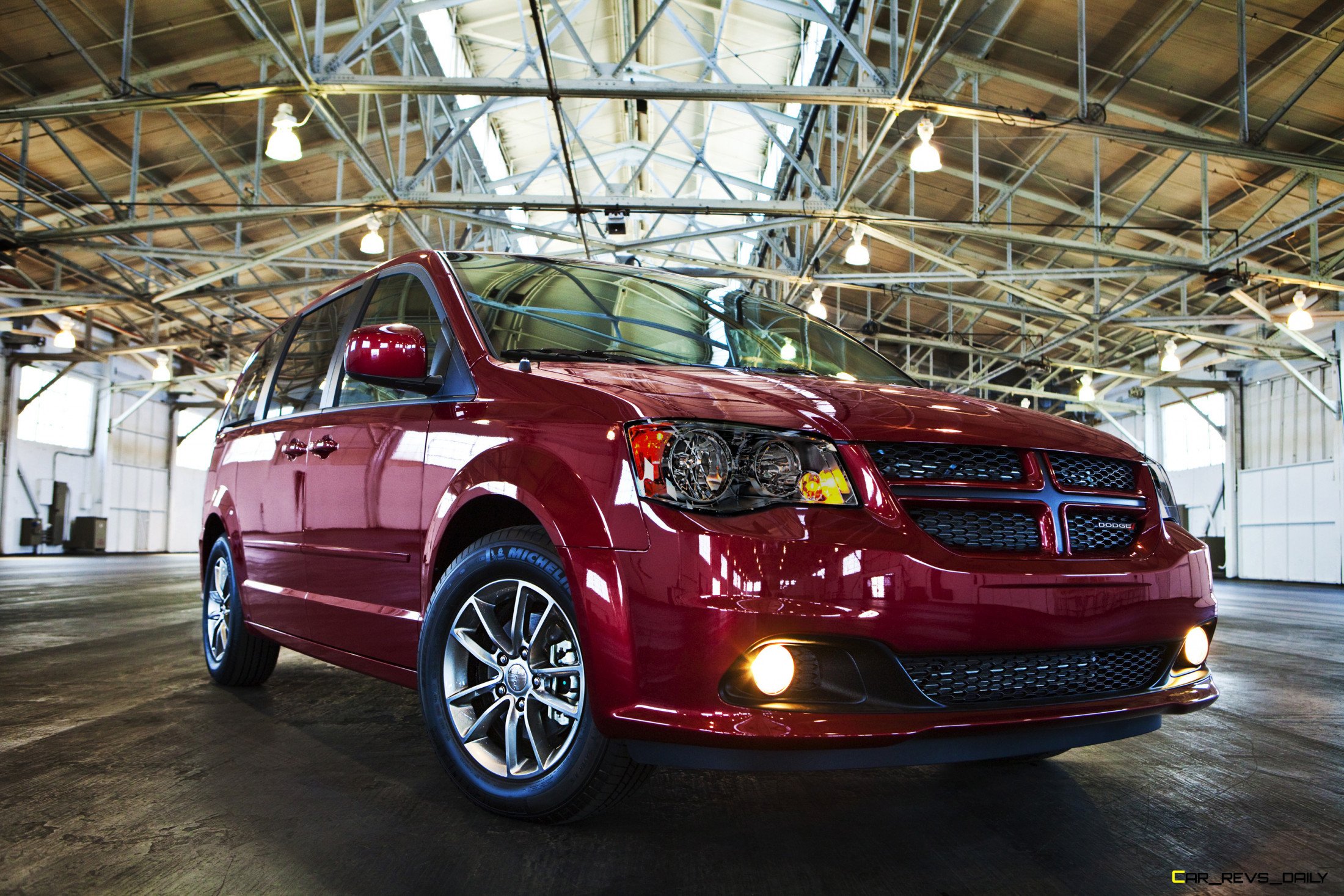Ever wonder what would happen if the humble minivan was given a serious infusion of performance to go along with its mall crawling functionality? Many automakers have teased the idea of a performance model, but very few have actually produced it (Dodge did produce a R/T version in 2016.) But did you know that the idea actually had its roots much earlier? In this installment we take a look at the 1999 Dodge Caravan R/T concept to see if it successfully planted the seeds for a performance focused family mobile?
Race ready styling

First unveiled to the world in 1999 during a boom period for Chrysler design this R/T concept was based on the third generation Caravan and it was supposed to show the world what a performance focused Caravan of the period could look like. The basic jellybean shape was retained, but the van had a much more aggressive stance, and Dodge engineers even gave the souped up people hauler a new front fascia design that incorporated a blood red emblem in the center of the grille. A key part of this design was the completely reworked front bumper which had bigger air intakes and even had repositioned fog lights.
The hood featured a set of vents, but other than those, the rest of the van is largely an aesthetic exercise with bigger wheels and big R/T graphics running alongside the flanks of the van. Unfortunately only two press images have survived into the present day and as a result we don’t get an opportunity to see the rear of the van but we suspect that minor tweaks were made back there as well with a rear roof spoiler peeking out from the one lone image that remains of the exterior.
Caravan functionality with an edge

The lack of images also extends to the cabin where one lone image is all we have to go with in regards to describing the interior. Despite that there are still some details that stand out when the cabin is looked at with a discerning eye. The concept features black leather seats while the leather wrapped steering wheel features red contrast stitching. A brushed aluminum instrument panel and racing style metal pedals helped give the cabin more aggression. Rubberized black and white rubber floor mats rounded out things, and were added into address the rigors of four season driving especially during the winter.
But ultimately performance is what this concept is all about, and Dodge had very big plans for the people hauler in this regard. Back then, the most powerful engine you could get on the Caravan was a 3,8 liter V6 that made a rather paltry (but reasonable for the period) 180 horsepower. However, this concept aimed to completely re-write the script by equipping an engine that would have been the most powerful ever seen in a minivan. Producing 325 horsepower, the V6 would have been a monster if it made it to production and it was paired with the firm’s four speed automatic for good measure.
Power like this was practically unheard of in the minivan world, and had things would’ve been allowed to play out fully, the engine would have allowed the Caravan to make a very potent statement out on the road. That included outshining competitors like the Honda Odyssey which only made 240 horsepower with its strongest engine and the Toyota Sienna’s 210 horsepower V6.
What happened to it?
Sadly, the concept itself was not given the green light for production with the R/T not being offered on the third generation Caravan. However, Dodge never completely gave up on the idea and eventually introduced an R/T model on the fifth generation Caravan. But despite the addition of some minor suspension upgrades this iteration of the Caravan R/T was not as extreme as the 1999 R/T concept and had decidedly tamer exterior styling to boot.
But the real question is whether the Caravan R/T did a good job of planting the idea of a performance focused minivan into the hearts of consumers. We think that while the concept is unfortunately a dated example of 1990s technology (especially in its interior) the core point is still vividly obvious and we think that this particular concept helped serve as an interesting crystal ball into a potential new direction for a segment that typically focuses on being a family vehicle first versus being a performance vehicle.

Carl Malek has been an automotive journalist for over 10 years. First starting out as a freelance photographer before making the transition to writing during college, his work has appeared on numerous automotive forums as well as websites such as Autoshopper.com.
Carl is also a big fan of British vehicles with the bulk of his devotion going to the Morgan Motor Company as well as offerings from Lotus, MG, and Caterham. When he is not writing about automobiles, Carl enjoys spending time with his family and friends in the Metro Detroit area, as well as spending time with his adorable pets.


